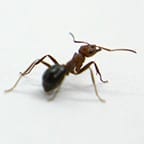Since the dawn of time, nature has been working hard, engineering everyone and everything to the highest standards on Earth.
Dragonflies that can propel themselves in any direction, sharks with skin with tiny scales that help them swim faster, termites able to build dens that always keep a steady and comfortable temperature inside – those examples are just a drop in the ocean of amazing nature-designed solutions.
Granted, there have been a few individual attempts to copy nature’s designs.
For instance, back in the 15th Century, Italian painter Leonardo da Vinci looked at birds’ anatomy while sketching his “flying machine”.
His device never took off, but the Wright brothers did manage to build the first aeroplane in 1903 – after years of observing pigeons.
Still, several decades had to pass before businesses began realising that nature could really help them too.
Probably one of the most notable nature-inspired technologies of the last century is the well-known hook-and-look fastener, Velcro. The man who invented it, Swiss George de Mestral, is said to have been inspired by burrs he constantly removed from his dog’s fur.
Innovation and copycats
But it wasn’t until the late 20th Century, that many firms really started to devote time, money and often an entire team of designers, specifically charged with looking at biological solutions to technological hurdles they came across.
“It is important to look at nature – after all, it has had 3.8 billion years to come up with ideas,” says Janine Benyus, a natural history writer who coined the term “biomimicry” in 1998.
Dr Benyus was the first person to really describe this emerging science in her book Biomimicry: Innovation Inspired by Nature.
She says that after the book went viral, entrepreneurs from all over the world started calling her, seeking advice on resolving a particular issue in a non-traditional, nature-copying way.
So the world’s first Biomimicry Institute was set up in 2005, with a team of consultants trained to help businesses.
“They come in, we learn what it is they’re trying to do, and we look for that same function in the natural world – we do huge biological literature searches,” says Dr Benyus.
“And then we say: ‘Well, that’s how nature has done it for 3.8 billion years!’
“And it’s always a lot less energy, a lot less material, no toxins – a lot better.”
Dr Benyus’s clients range from Nasa to a multitude of companies of many different domains.
According to a well-known economist Lynn Reaser, on the global scale by 2025, biomimicry could affect about $1tn (£621 bn) of annual gross domestic product, and account for up to 1.6 million US jobs.
Butterfly’s wings
“There are three types of biomimicry – one is copying form and shape, another is copying a process, like photosynthesis in a leaf, and the third is mimicking at an ecosystem’s level, like building a nature-inspired city,” says Dr Benyus.
Businesses are usually interested in the first two categories, she adds – and a great example of the shape-based type is the Mirasol displays produced by a US mobile phone chip maker, Qualcomm.
Unlike regular screens with backlight or e-ink, these displays, which are still being developed, create colour by mimicking the way a butterfly’s wings reflect sunlight.
Read more . . .
Bookmark this page for “biomimicry” and check back regularly as these articles update on a very frequent basis. The view is set to “news”. Try clicking on “video” and “2” for more articles.









